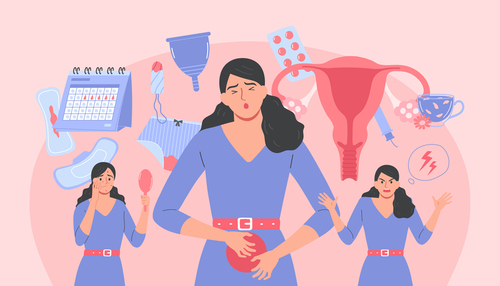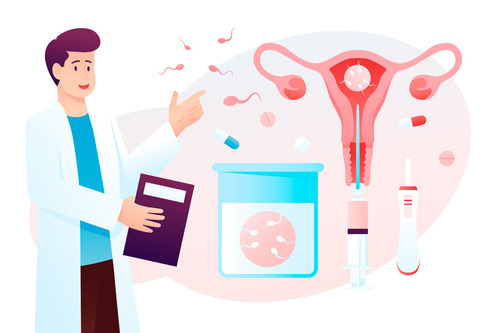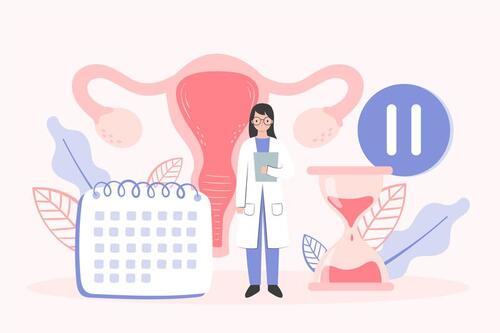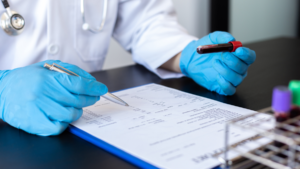Ovarian hyperstimulation syndrome (OHSS) is a medical condition that can occur rarely in women who undergo fertility treatments, particularly those involving assisted reproductive technologies like in vitro fertilization (IVF). It happens due to hyperstimulation of ovaries by hormones used to induce ovulation.
OHSS impacts approximately 3% of women undergoing in vitro fertilization (IVF). Additional factors that increase the risk of OHSS comprise being under the age of 35 and experiencing markedly elevated estrogen levels during fertility procedures.
Health Data Science
Understanding OHSS for Various Reasons:
- Healthcare providers can educate patients about the risk factors for OHSS and take preventive measures to reduce its occurrence, such as adjusting medication dosages or opting for alternative protocols.
- Understanding OHSS helps fertility specialists tailor treatment protocols to minimize the risk of developing the condition while still achieving successful outcomes in assisted reproduction.
- Recognizing the symptoms of OHSS allows healthcare providers to monitor patients closely and intervene promptly if necessary to prevent complications. This can improve the overall experience for patients undergoing fertility treatments.
Cause of Ovarian Hyperstimulation Syndrome:

1. Overview of Ovulation Induction – involves the administration of fertility medications, such as gonadotropins (e.g., follicle-stimulating hormone, FSH), to stimulate the ovaries to produce multiple follicles and eggs. The primary goal is to enhance the chances of conception, particularly in individuals with ovulatory dysfunction or infertility.
2. Hyperstimulation of Ovaries occurs when the ovaries respond excessively to ovulation induction medications, resulting in the development of numerous ovarian follicles. This hyperstimulation leads to an exaggerated ovarian response, characterized by increased vascular permeability, fluid accumulation in the abdomen (ascites), and sometimes in the chest (pleural effusion).
3. Risk Factors Associated with OHSS:
- Women who have experienced OHSS in previous cycles are at increased risk in subsequent cycles.
- Women under 35 are at higher risk due to their increased ovarian reserve and sensitivity to fertility medications.
- Elevated estradiol levels during ovulation induction can predispose individuals to OHSS.
- Individuals with PCOS have a higher baseline level of androgens and are more susceptible to developing OHSS.
- The use of gonadotropin-releasing hormone (GnRH) agonists or antagonists, which are often used to prevent premature ovulation during ovarian stimulation, can influence the risk of OHSS.
4. Relationship to Fertility Treatments:
OHSS is primarily associated with fertility treatments that involve ovarian stimulation, such as in vitro fertilization (IVF) and rarely intrauterine insemination (IUI). Ovarian hyperstimulation syndrome IVF and IUI treatments typically utilize ovulation induction medications to induce the development of multiple follicles.
The controlled ovarian hyperstimulation process aims to optimize the number and quality of eggs retrieved for fertilization.
Classification of OHSS:
Ovarian hyperstimulation syndrome (OHSS) can be categorized into two main types based on severity.

- Mild/Moderate OHSS is the less severe form of the syndrome, that includes symptoms like abdominal bloating, discomfort, and mild weight gain due to fluid retention. Ovarian enlargement may be noticeable, but it usually does not cause significant complications. Patients with mild to moderate OHSS can often be managed with conservative measures, such as increased fluid intake, rest, and over-the-counter pain medications.
- Severe OHSS is a more serious and potentially life-threatening form of the syndrome. Symptoms are more pronounced and can include severe abdominal pain and distension, difficulty breathing (due to fluid accumulation in the chest), nausea, vomiting, and decreased urine output. Complications of severe OHSS may include ovarian torsion (twisting), thromboembolism (blood clots), electrolyte imbalances, and kidney failure. Severe OHSS requires immediate medical attention and hospitalization for close monitoring and intensive management. In extreme cases, drainage of fluid from the abdomen (paracentesis) or chest (thoracentesis) may be necessary to relieve symptoms and prevent complications.
Symptoms of OHSS:

- During Early Symptoms, patients may notice mild abdominal discomfort, bloating, and nausea. Some may experience diarrhea and a slight increase in weight due to fluid retention.
- During Progressive Symptoms, the discomfort becomes more pronounced, accompanied by persistent nausea and vomiting. Rapid weight gain and increased abdominal size may occur, along with difficulty breathing, especially when lying flat.
- Severe Symptoms of OHSS include intense abdominal pain, tightness, and difficulty breathing even when sitting or standing. Patients may also experience rapid weight gain, a significant decrease in urine output, dizziness, and low blood pressure. But it is left untreated, then brain fog, confusion, or altered mental status may occur.
Must Read: Fresh or Frozen Embryo Transfer Process Step By Step for IVF
Diagnoses of OHSS:
To diagnose ovarian hyperstimulation syndrome (OHSS), we typically rely on a combination of clinical assessment, imaging techniques, and laboratory tests.

- During the clinical assessment, I’ll carefully evaluate your symptoms and medical history, paying close attention to any signs of abdominal bloating, discomfort, or difficulty breathing.
- Imaging techniques, such as ultrasound, can help visualize the size and appearance of your ovaries and detect any fluid accumulation in the abdomen or chest.
- Laboratory tests, including blood tests, may be conducted to assess hormone levels and electrolyte imbalances, which can provide further insight into the severity of OHSS and guide treatment decisions.
Treatment of OHSS:
When it comes to treating ovarian hyperstimulation syndrome (OHSS), our medical approach typically depends on the severity of your symptoms and overall health.
- For mild to moderate cases, we often start with conservative management strategies. This involves measures like increasing your fluid intake to stay hydrated, resting to alleviate discomfort, and monitoring your symptoms closely. Over-the-counter pain medications may also help alleviate any abdominal discomfort or bloating you may experience.
- In more severe cases where symptoms persist or worsen, hospitalization and intervention may be necessary. This allows us to provide more intensive monitoring and supportive care. You may receive intravenous fluids to address dehydration and electrolyte imbalances, as well as medications to relieve nausea and discomfort.
- In the most severe cases of OHSS, particularly those associated with significant ovarian enlargement or complications like ovarian torsion, ovarian aspiration or surgery may be considered. Ovarian aspiration involves draining fluid from enlarged ovarian cysts using a needle inserted through the skin under ultrasound guidance. Surgery may be necessary in rare cases of severe OHSS that do not respond to other treatments, particularly if there is a risk of ovarian torsion or rupture.
Relationship between OHSS and Infertility:

- Impact of OHSS on fertility treatments – Severe cases of OHSS may necessitate the postponement or cancellation of fertility treatments to prioritize the patient’s health and safety.
- Implications for fertility potential – Particularly severe cases, there may be concerns about the impact of the syndrome on ovarian function and the quality of eggs retrieved during ovarian stimulation. This can raise questions about the long-term fertility prospects and the success rates of future fertility treatments for affected individuals.
- Management strategies for infertile patients at risk for OHSS may involve individualizing treatment protocols to reduce the likelihood of OHSS development, such as using lower doses of ovulation induction medications or alternative treatment regimens. Close monitoring during ovarian stimulation cycles is essential to promptly identify any signs of OHSS and intervene as necessary to prevent its progression.
So by now you know, why early recognition and management of ovarian hyperstimulation syndrome (OHSS) is paramount for timely intervention that can mitigate the risk of complications and improve patient comfort and safety. In simple words, since its symptoms are very similar to menstrual hormonal issues, please do not ignore them and get OHSS diagnosed at its earliest stages if the symptoms persist for more than two months.




